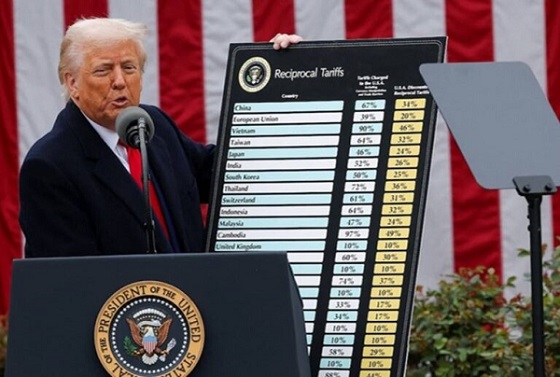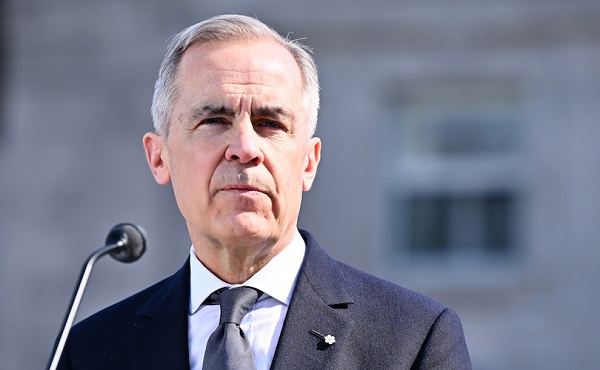Economy
Big Tech’s AI Dreams And Dems’ Electrification Push Are Keeping More Coal Online For Longer

 From the Daily Caller News Foundation
From the Daily Caller News Foundation
By Nick Pope
Power-hungry data centers and Democrats’ broad electrification agenda are teaming up to keep more coal-fired capacity online for longer than initially projected, according to The Wall Street Journal.
Tech companies’ data centers, policies pushing adoption of products like electric vehicles (EVs) and heat pumps and manufacturing activity are quickly driving up electricity demand projections, forcing some utility companies to keep coal-fired power plants operational for longer than anticipated, according to the WSJ. In 2023, S&P Global Commodity Insights projected that the U.S. would retire about 133,000 megawatts of remaining coal capacity by 2035, but the organization’s 2024 outlook now anticipates that roughly 105,000 megawatts of coal-fired generation will be retired by that year.
“Utilities around the country are kind of going into panic mode” because they are finding themselves unprepared for surging power demand, Michelle Solomon, a senior policy analyst at Energy Innovation, told the WSJ. Nearly every regional power market in the U.S. increased their projections for five-year annualized electricity demand growth between 2022 and 2023, with the rate doubling in some instances.
Coal-fired power plants are also benefiting from the fact that green energy generation is not coming online fast enough to replace retiring fossil fuel capacity, according to the WSJ. Coal is a dirtier fuel source than alternatives like natural gas, but the artificial intelligence (AI) boom and Democrats’ push for electrification — an effort intended to counter climate change —are prolonging its use.
“The existing fleet [of fossil-fuel generators] needs to stick around longer and run harder,” Patrick Finn, an analyst at the energy-focused consultancy Wood Mackenzie, told the WSJ. This dynamic will likely be a headwind for cutting emissions, which has been a top domestic and international priority for the Biden administration.
The Biden administration has pursued policies that will drive up long-term electricity demand while making it more difficult to build reliable, cheap fossil fuel-fired capacity.
On the demand side, the administration has pushed policies that will substantially increase the number of EVs on the road and issued regulations that often favor electric appliances, in addition to incentivizing power-intensive manufacturing while the AI boom takes shape. In terms of supply, the Biden Environmental Protection Agency (EPA) has moved to reshape the American power grid by effectively mandating the installation of costly carbon capture and sequestration (CCS) technology for coal plants, requiring that these plants control 90% of their emissions by 2032 if they are to operate past 2039, according to the Center for Strategic and International Studies.
Bjorn Lomborg
The stupidity of Net Zero | Bjorn Lomborg on how climate alarmism leads to economic crisis

From spiked on YouTube
Note: This interview is focused on Europe and the UK. It very much applies to Canada. The 2025 Federal Election which will see Canadians choose between a more common sense approach, and spending the next 4 years continuing down the path of pursuing “The Stupidity of Net Zero”.
European industry is in freefall, and Net Zero is to blame.
Here, climate economist Bjorn Lomborg – author of Best Things First and False Alarm – explains how panic over climate change is doing far more damage than climate change itself. Swapping cheap and dependable fossil fuels for unreliable and expensive renewables costs our economies trillions, but for little environmental gain, Lomborg says.
Plus, he tackles the myth of the ‘climate apocalypse’ and explains why there are more polar bears than ever.
Support spiked: https://www.spiked-online.com/support/
Sign up to spiked’s newsletters: https://www.spiked-online.com/newslet…
Business
Scott Bessent Says Trump’s Goal Was Always To Get Trading Partners To Table After Major Pause Announcement
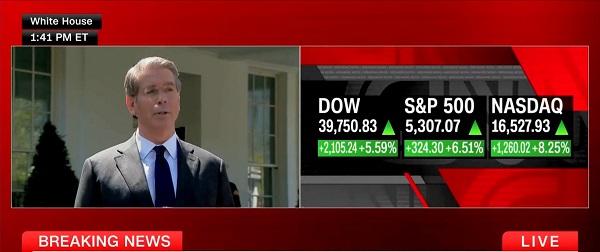

From the Daily Caller News Foundation
By
Secretary of the Treasury Scott Bessent told reporters Wednesday that President Donald Trump’s goal was to have major trading partners agree to negotiate after Trump announced a 90-day pause on reciprocal tariffs for many countries after dozens reached out to the administration.
Trump announced the pause via a Wednesday post on Truth Social that also announced substantial increases in tariffs on Chinese exports to the United States, saying 75 countries had asked to talk. Bessent said during a press event held alongside White House press secretary Karoline Leavitt that Trump had obtained “maximum leverage” to get trading partners to negotiate with the April 2 announcement of reciprocal tariffs.
“This was his strategy all along,” Bessent told reporters during an impromptu press conference at the White House. “And that, you know, you might even say that he goaded China into a bad position. They, they responded. They have shown themselves to the world to be the bad actors. And, and we are willing to cooperate with our allies and with our trading partners who did not retaliate. It wasn’t a hard message: Don’t retaliate, things will turn out well.”
Dear Readers:
As a nonprofit, we are dependent on the generosity of our readers.
Please consider making a small donation of any amount here.
Thank you!
WATCH:
China imposed retaliatory tariffs on American exports to the communist country Wednesday, imposing an 84% tariff on U.S. goods after Trump responded to a 34% tariff by taking American tariffs to 104%.
“Based on the lack of respect that China has shown to the World’s Markets, I am hereby raising the Tariff charged to China by the United States of America to 125%, effective immediately,” Trump said. “At some point, hopefully in the near future, China will realize that the days of ripping off the U.S.A., and other Countries, is no longer sustainable or acceptable.”
“They kept escalating and escalating, and now they have 125% tariffs that will be effective immediately,” Bessent said during the press conference.
Bessent said that China’s actions would not harm the United States as much as it would their own economy.
“We will see what China does,” Bessent said. “But what I am certain of, what I’m certain of, is that what China is doing will affect their economy much more than it will ours, because they have an export-driven, flood the world with cheap export model, and the rest of the world now understands.”
The Dow Jones Industrial average closed up 2,962.86 points Wednesday, with the NASDAQ climbing by 1,755.84 points and the S&P 500 rising 446.05 points, according to FoxBusiness.
-

 2025 Federal Election2 days ago
2025 Federal Election2 days agoRCMP memo warns of Chinese interference on Canadian university campuses to affect election
-

 2025 Federal Election1 day ago
2025 Federal Election1 day agoResearchers Link China’s Intelligence and Elite Influence Arms to B.C. Government, Liberal Party, and Trudeau-Appointed Senator
-
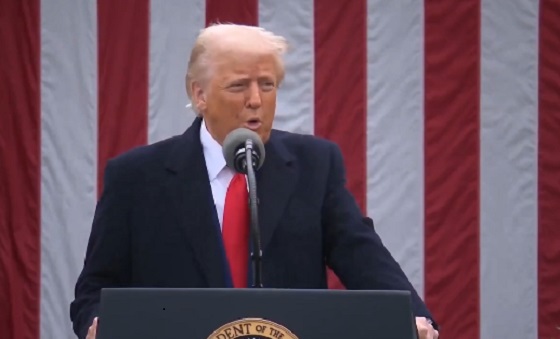
 Business2 days ago
Business2 days agoTrump raises China tariffs to 125%, announces 90-day pause for countries who’ve reached out to negotiate
-

 2025 Federal Election2 days ago
2025 Federal Election2 days agoThe status quo in Canadian politics isn’t sustainable for national unity
-
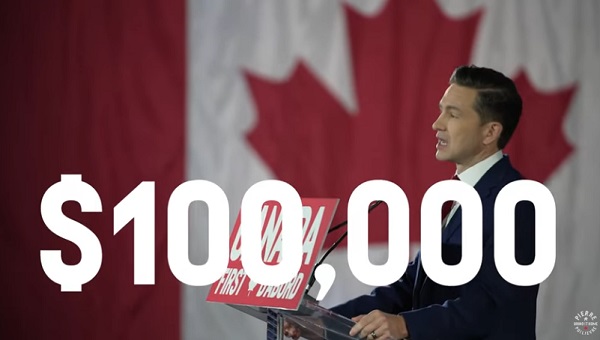
 2025 Federal Election1 day ago
2025 Federal Election1 day agoPoilievre Announces Plan To Cut Taxes By $100,000 Per Home
-

 Business2 days ago
Business2 days agoScott Bessent Says Trump’s Goal Was Always To Get Trading Partners To Table After Major Pause Announcement
-

 2025 Federal Election1 day ago
2025 Federal Election1 day agoTwo Canadian police unions endorse Pierre Poilievre for PM
-

 2025 Federal Election22 hours ago
2025 Federal Election22 hours agoCarney needs to cancel gun ban and buyback




